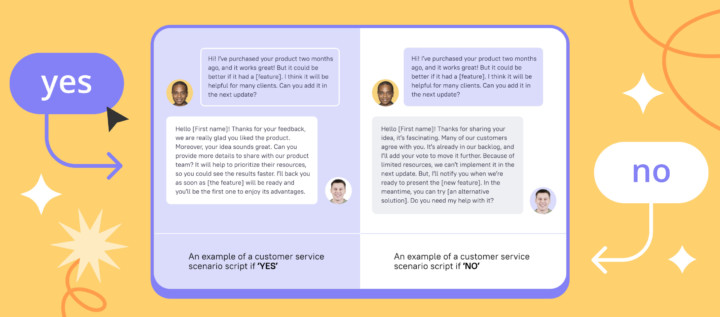Mastering BANT sales: An in-depth tutorial for sales professionals

Introduction
In the competitive landscape of sales, the BANT framework has emerged as a pivotal tool for qualifying leads and optimizing sales processes. Comprising Budget, Authority, Need, and Timing, this methodology enables sales professionals to systematically evaluate prospects and tailor their approaches for maximum impact.
As organizations increasingly integrate automation tools like Dashly into their strategies, the effectiveness of BANT is amplified, allowing for improved efficiency and revenue growth.
This article delves into the essential components of the BANT framework, offers practical strategies for implementation, highlights common pitfalls to avoid, and explores alternative methodologies that can complement BANT in today’s evolving sales environment.
By understanding these elements, sales teams can enhance their qualification processes and drive better outcomes in their engagements.
Understanding the BANT framework: Key components and importance
The BANT sales framework is your playbook for qualifying leads. It stands on four pillars: Budget, Authority, Need, and Timing. Master these components, and you’ll be well on your way to effective sales qualification. But here’s the kicker — when you integrate automation tools like Dashly, you supercharge the process, ramping up productivity and driving revenue growth.
Before Dashly, sales teams were stuck in a cycle of slow responses, missed SLAs, and wasted efforts on low-quality prospects. Manual processes were like trying to run a marathon in flip-flops — inefficient and painful.
Let’s break down the BANT components:
Budget: First off, do your prospects have the cash to invest in your solution? If you find out about this important aspect from the start, your team can tailor pitches that fit the prospect’s financial situation, boosting your chances of closing deals.
Authority: Next, you need to know who’s calling the shots. Is your lead the decision maker in their company or is there someone else who has the last say? This lets your sales team connect with the right decision-makers, maximizing your conversion potential.
Need: What specific problems does your product solve for this particular lead? What value can you bring them? This helps your team focus on high-potential candidates, making your presentations more relevant and building stronger relationships.
Timing: Finally, what’s the urgency? Understanding when prospects need a solution is key. With Dashly’s automated follow-ups, your team can align their strategies with the prospect’s decision-making timeline, leading to quicker responses and better SLA compliance.
The results speak for themselves. Companies using this refined approach have seen an average revenue increase of 12% per lead. A case study titled “Effective Application of BANT Sales” shows that revenue teams should dig into financial backgrounds, ask targeted budget questions, assess value and ROI, and engage decision-makers early. This structured approach enables sales reps to customize pitches, create urgency, and ultimately boost win rates.
And there are some tools that can help you leverage the BANT sales more effectively. As James Urie, Senior Partnership Manager, puts it, “Millennial consumers have no patience for traditional marketing. So why not create a B2B buying experience that mirrors the way they make purchases every day?”
So, how do you do it? Lead with your product. This mindset highlights the necessity of adapting your marketing strategies to fit modern consumer behaviors.
Finally, a robust CRM like Dashly allows sales teams to track key performance indicators (KPIs) and measure their approach’s effectiveness. Overall, when you combine the BANT model with Dashly’s automation, you simplify the qualification process and boost your sales team’s efficiency. This is not just a nice-to-have; it’s a must-have for success in 2025 and beyond.

Implementing BANT: Strategies for effective sales qualification
To make your sales processes work like a well-oiled machine, you need a solid framework. Here are some straightforward strategies to get you there:
Create a qualification checklist: Think of this as your playbook. A structured checklist helps you evaluate prospects consistently. It’s about making sure you don’t miss anything important. This consistency pays off in the long run.
Utilize CRM tools: A good CRM is your best friend when it comes to managing leads. These systems help you track everything and keep you organized. Automate reminders for follow-ups based on timing—that’s how you stay responsive. With over 45% of CRM usage focused on contact management and automation, you can’t afford to overlook these tools. Plus, 94% of companies that switched to cloud-based CRMs reported better online security. That’s a win-win.
Train your sales group: Knowledge is power. Invest time in training your sales team on the framework. Role-playing can turn theory into practice, helping them recognize and address key issues during customer interactions. Incorporate BANT criteria into your scoring model to prioritize the best prospects. When your team focuses on the most promising leads, they become more efficient and productive. Research shows that companies using CRM systems see a 39% increase in cross-selling and upselling revenue. That’s not just a number; it’s a game changer.
Regularly review and adjust: Don’t set it and forget it. Continually analyze your results to spot areas needing improvement. Adapt your strategies based on feedback to keep your qualification process sharp. A staggering 91% of businesses report lower customer acquisition costs (CAC) after implementing CRM, with almost half seeing reductions between 11% and 20%. These aren’t just numbers—they’re proof that refining your approach pays off.
By implementing these tactics, your sales team can execute the framework effectively, leading to better prospect management and increased sales success. It’s about working smarter, not harder.

Common mistakes in using BANT and how to avoid them
Sales professionals often trip over the same hurdles when trying to implement BANT sales strategies. Recognizing these common blunders can dramatically improve your qualification process. Let’s break down the key pitfalls to avoid:
Assuming budget is fixed: A common fallacy is thinking a prospect’s budget is set in stone. Instead of making that assumption, ask if there’s any wiggle room in their financial constraints. You might be surprised by what you find.
Failing to identify the decision-maker: Talking to someone who can’t make the call is like running on a treadmill—lots of effort, but no progress. Identify and engage with key decision-makers early on. It’s about streamlining the process and not wasting anyone’s time.
Neglecting to understand the need: Skipping the needs assessment phase is a recipe for disaster. If you rush through this, you risk misaligning your offering with what they actually need. Take the time to ask the right questions and uncover their specific pain points.
Ignoring yiming factors: Timing is everything. If you overlook the urgency of a prospect’s needs, you might miss out on a golden opportunity. Always clarify their timeline for making decisions and adjust your follow-up strategies to stay relevant.
Overlooking follow-up: After the initial qualification phase, don’t go dark. Consistent communication is key. Regular follow-ups keep your solution top of mind and foster ongoing discussions. Consider this: business leaders who train their reps to start cold calls with “How’ve you been?” see a 6.6% boost in success rates. Effective communication matters.
Then there’s the case of Overconfidence in Lead Conversion. Many sales experts assume that every lead will convert into a sale. That’s a dangerous mindset. A lead is just the start of a conversation. Manage your expectations and improve your engagement strategies accordingly. Preparation and strategic communication are your best friends in sales.
Finally, when it comes to reaching out, the sweet spot for emailing prospects is between 8:00 A.M. and 3:00 P.M., according to GetResponse.
By staying vigilant about these common errors and integrating these strategies into your approach, you can significantly enhance your BANT sales implementation. Better qualification outcomes are within your reach.

Exploring alternatives to BANT: When to use different sales methodologies
In sales, one size doesn’t fit all. While the framework you’re using might be solid, there are times when alternative strategies can hit the mark better. Let’s break down a few that can really make a difference:
CHAMP: This stands for Challenges, Authority, Money, and Prioritization. Research shows that this approach digs into the challenges a prospect faces before even touching on resources or authority. It’s about understanding their pain points first. This method is gaining traction because it aligns with the modern emphasis on truly grasping customer needs.
SPIN Selling: This one’s about Situation, Problem, Implication, and Need-Payoff. It’s all about asking the right questions to get to the heart of a prospect’s issues and the cost of doing nothing. By focusing on the implications, you can build a compelling case for your solution. It’s not just about what you’re selling; it’s about why it matters.
MEDDIC: This stands for Metrics, Economic Buyer, Decision Criteria, Decision Process, Identify Pain, and Champion. It shines in complex transactions. MEDDIC helps marketing teams understand the economic impact of their solutions, which is essential when navigating intricate decision-making environments. If you’re dealing with a tough sell, this is your go-to.
Solution Selling: Here, the focus shifts from just pushing products to crafting tailored solutions that meet specific customer needs. Aligning your offerings with the unique challenges of potential clients not only creates more value but also builds stronger relationships.
Understanding these different methodologies allows professionals to choose the right tool for each unique situation. The effectiveness of these systems can significantly impact your success. Remember that quote: “the statistics referred to earlier illustrate the advantages of five distinct selling methodologies.” Look at case studies like Target Account Selling, which emphasizes identifying high-potential customers through diligent prospecting and qualification. It’s all about building long-term relationships and engaging with decision-makers.
As we move into 2024, mixing and matching these frameworks can sharpen your strategy, enhance efficiency, and ultimately drive revenue growth. The right approach can be the difference between a missed opportunity and a closed deal.

The future of BANT: Adapting to the changing sales environment
The commercial landscape is shifting, and if you want your framework to stay effective, it needs to adapt right alongside it. Here are the key factors that will shape its future:
Revenue automation tools and AI-driven solutions are game changers for BANT sales processes.
Companies that embrace these technologies are seeing a staggering 50% increase in leads.
This isn’t just about numbers; it streamlines the qualification process and digs deeper into data analysis.
When your team isn’t bogged down by administrative tasks, they can focus on what really matters: strategic engagement.Customer experience is crucial.
Today’s sales strategies must revolve around the customer.
That means empathy and a solid understanding of their journey are non-negotiable.
Consider this: 63% of prospects are more likely to engage with salespeople who offer something valuable.
By shifting your framework to prioritize insights and solutions, you can boost engagement and build meaningful connections.Agility is another crucial element.
Sales professionals must embrace an agile mindset, adjusting their qualification tactics based on real-time data and ongoing feedback from prospects.
This flexibility is vital.
In an ever-changing market, the ability to respond quickly and tailor interactions can set you apart.
Remember, representatives waste about 15% of their time leaving voicemails.
Better time management is essential to optimize engagement.Relationship building should not be overlooked.
Trust and connections are the backbone of successful sales.
As revenue dynamics evolve, it’s time for professionals to shift from merely qualifying leads to nurturing them.
This relational approach is key for long-term success.
For example, sending initial emails on Tuesdays and follow-ups on Thursdays can significantly enhance engagement.
Timing is everything when it comes to building relationships.
By recognizing these changes and adapting accordingly, sales professionals can evolve their application of BANT sales.
This ensures it remains a vital tool in a fast-paced, technology-driven sales environment.
Stay sharp, stay flexible, and keep your focus on what truly matters: the customer.

Conclusion
The BANT framework remains a vital tool for sales professionals aiming to enhance the lead qualification process. By focusing on Budget, Authority, Need, and Timing, organizations can systematically evaluate prospects and tailor their strategies for improved outcomes. The integration of automation tools like Dashly further amplifies the effectiveness of BANT, allowing for greater efficiency and increased revenue.
Implementing BANT effectively requires a structured approach, including:
– Developing qualification checklists
– Utilizing CRM systems
– Conducting thorough training for sales teams
Awareness of common pitfalls, such as assuming budget constraints or neglecting follow-ups, is crucial for success. By avoiding these mistakes, sales professionals can significantly improve their qualification processes and engagement with potential customers.
While BANT is a powerful methodology, exploring alternative frameworks like:
– CHAMP
– SPIN Selling
– MEDDIC
can offer additional insights and approaches tailored to specific sales scenarios. As the sales environment evolves, the future of BANT will depend on its ability to integrate with new technologies, prioritize customer experiences, and foster relationship-building.
In conclusion, mastering the BANT framework and its enhancements through technology not only streamlines lead qualification but also positions sales teams for success in an increasingly competitive landscape. Adapting strategies to incorporate flexibility and customer-centric approaches will ensure that the BANT framework remains relevant and effective in driving sales growth.






![21 proven tools for your 2025 marketing tech stack [Recommended by market experts]](https://www.dashly.io/blog/wp-content/uploads/2022/08/martech-stack-999-720x317.png)
![The ultimate guide to growth marketing in 2025 [explained by a growth hacker]](https://www.dashly.io/blog/wp-content/uploads/2023/04/The-ultimate-guide-to-growth-marketing-explained-by-a-growth-hacker-720x317.png)
